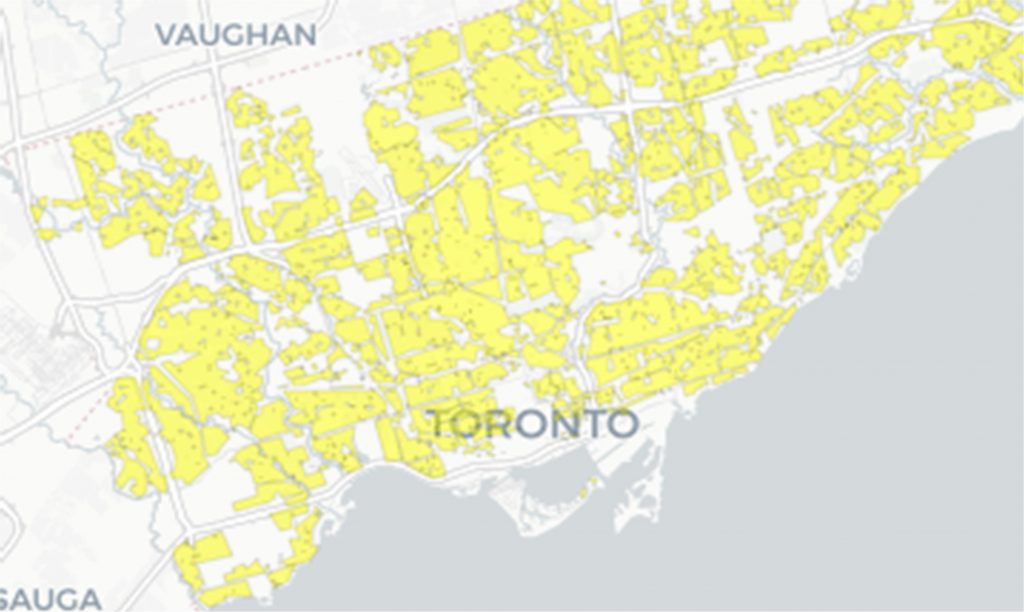By Ted Tsiakopoulos
Economist
To suggest there is a silver bullet that solves Canada’s housing supply problem is to oversimplify a complex problem. Turning a blind eye to the demand side of the market is also not prudent. In fact, over the last decade, demand factors such as low interest rates, employment growth and strong in-migration explained about one third of the increase in Ontario home prices.
Canada has increased its immigration targets in recent years as part of its plan to continue to grow the Canadian economy, and this requires more housing for newcomers. Housing demand was stoked further by monetary and fiscal stimulus following the COVID-19 outbreak. A well-functioning housing market also requires that supply grow in a timely way in response to increased demand and this was largely absent prior to the recent pandemic.
A recent report released by Canada Mortgage and Housing Corp. (CMHC), suggests that an additional 3.5 million homes will be needed by 2030, over and above what is already produced annually, to restore housing affordability in Canada. More than 1.8 million of those additional homes will need to be built in Ontario. The most important questions are: How we can get there? And what mix of housing will be needed? Finding the answers to these questions requires cities and regions to embrace, among other things, new analytical approaches to help inform land use and transportation planning.
Restoring order without design
Alan Bertaud, a world-renowned urban planner, suggested in his 2018 book, Order Without Design: How Markets Shape Cities, that more coordination and collaboration is required between those who set zoning regulations (planners) and those who understand the market impacts of those regulations (economists). As Bertaud endorsed in a recent economist association event held in Toronto, such coordination can come in the form of new analytical techniques that could inform zoning changes and infrastructure investments. CMHC is working with provincial, municipal and non-government partners to build and refine urban land-use models, such as UrbanSim, to provide urban decision-makers, and the citizens they serve, with improved access to urban market simulation tools based on timely, reliable data. The models seek to understand which submarkets are most in need of housing and how shifts in broader land use, zoning, transportation, economic and migration policy can get us closer to meeting housing needs. The dialogue, data and simulation tools created from this work will contribute to better housing supply, a more stable housing market, and more inclusive and environmentally sustainable urban regions across Canada.
Densifying yellowbelt communities in Toronto – a key piece of the puzzle
Revisiting case studies, such as the Bessarion subway station experiment in the North York suburb of Toronto in the early 2000s, can provide us with lessons learned. These lessons learned can be applied to neighbourhoods such as the Bloor West and Danforth Village areas, which are short on suitable housing supply but desirable to city residents. The Bessarion subway stop, which sits on the Sheppard line of the Toronto subway system, was completed in 2002. Zoning regulations around the stop enabled only low-density housing to be built at the time. It ultimately took more than a decade to push density high enough to support ridership and a reasonable return on transit investment. Better alignment and coordination between zoning, water and sewage capacity and the construction timeline for the Bessarion stop would have gone a long way to supporting more density, housing supply, ridership and development of environmentally sustainable and inclusive communities.
A large portion of Toronto (shown in yellow in Figure 1 and now known as the “yellowbelt”), including the Bloor West and Danforth Village areas, are largely zoned exclusively for single-family detached housing, and could offer significant potential for more density and supply if rezoned. These neighbourhoods are often adjacent to major avenues and streets that are near transit and other amenities. These neighbourhoods are also often home to over-housed aging households who would like to remain in the community but have few alternative, maintenance-free housing options. By building more “missing middle” housing, which includes secondary suites, triplex/duplexes and midrise condos, aging households would be given more housing alternatives, thereby encouraging much-needed turnover of the existing housing stock. This could free up single-family homes that are in greater demand by under-housed younger families. Indeed, by designing such upzoning scenarios 500 metres and one km away from transit and running the rezoning assumptions through our UrbanSim micro-simulation land use models, we found that some of the excess demand could be satisfied. Furthermore, this upzoning would enable more complete and inclusive communities enabling middle to lower income households to secure alternative housing options with excellent access to jobs and transit.

Figure 1: Map showing the Yellowbelt. UrbanSim modelling demonstrated that a modest upzone of the Yellowbelt would make more than 45,000 extra housing units possible by 2030.
Source: UrbanSim Canada Modelling App. CMHC, Statistics Canada, City of Toronto, Altus, Teranet
FAR: Floor Area Ratio
DUA: Dwelling Units Per Acre
Rezoning urban core is not a sufficient condition
While easing zoning regulations is a necessary condition, it is not sufficient on its own. Other barriers also need to be addressed simultaneously. Structural barriers such as neighbourhood resistance to more density (NIMBYism), land value uplift from more density, shortage of skilled trades, lengthy planning approval processes, and government development charges can result in fewer viable housing projects. The recently announced Housing Accelerator Fund (HAF), as part of the recent federal budget tabled, is meant to incentivize cities to break down these structural barriers and deliver more housing.
Ted Tsiakopoulos is a professional economist, best-selling author and sought-after speaker with more than 25 years of experience analyzing housing and financial markets. Ted can be reached on LinkedIn.












